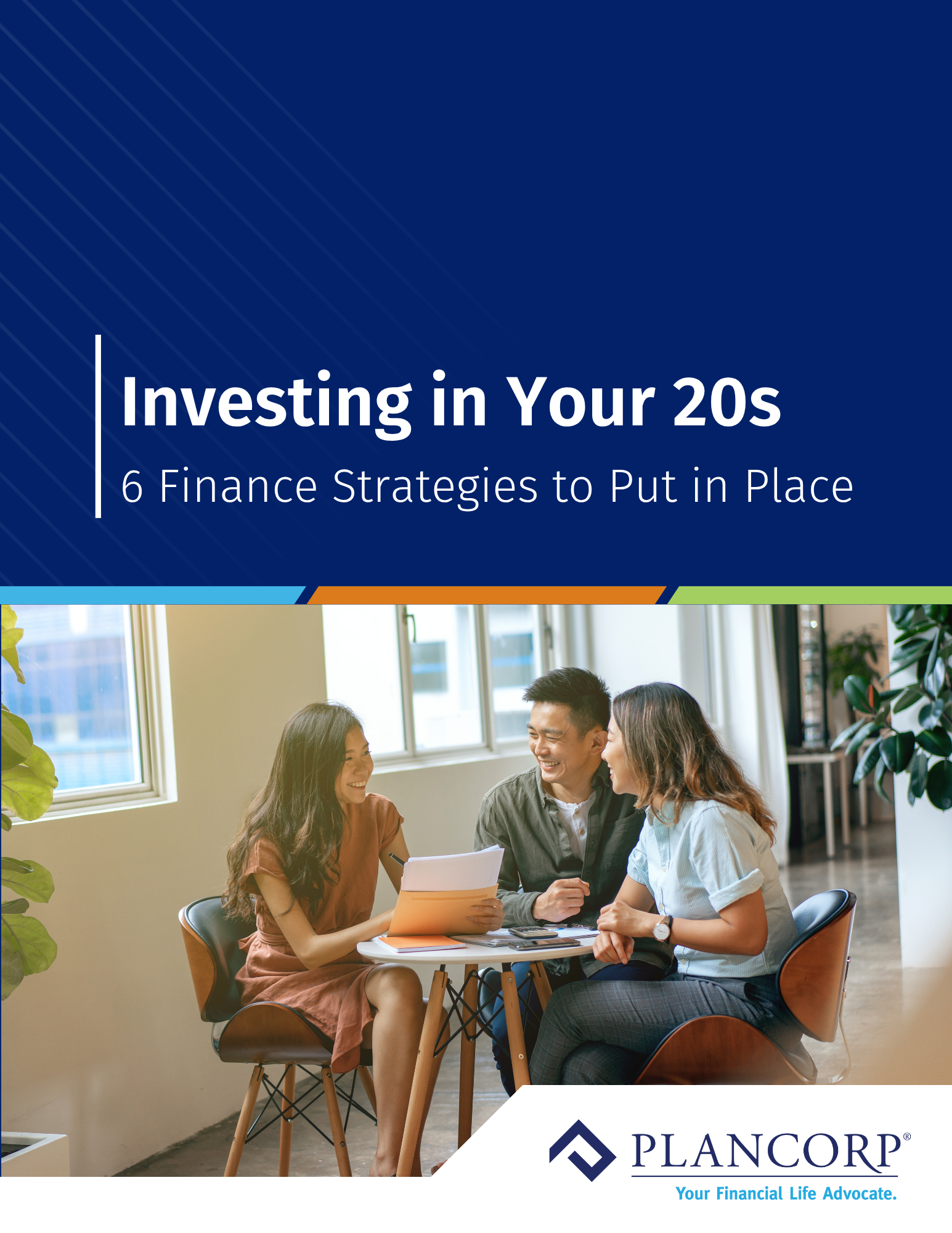Investing in Your 20s: 6 Finance Strategies to Put in Place
The financial decisions you make in your 20s are arguably the most impactful of your life. The single most important decision? Start investing now, even if it feels small.
Consider this example:
Two college graduates invest in tax-deferred accounts earning an average annual return of in the stock market.
- Investor A contributes $250/month for 10 years ($30,000 total) and then stops. After 40 years, their long-term investment portfolio grows to $509,605.
- Investor B waits 10 years, then contributes $250/month for 30 years ($90,000 total). Despite saving three times as much, they end up with $375,074.
This illustrates the unmatched power of time and compounding. Starting early turns small habits into major results.
With that in mind, here are the most important things you should do in your 20s. With that in mind, here are the most important things you should do in your 20s:
1. Set Goals
Before you invest, define what you want to achieve with your wealth. If saving is a top priority (which we would argue it should be, at any age or stage, but especially when you’re just starting out), a reverse budget framework is a great place to start.
By reverse budgeting, you prioritize saving or 'pay yourself first.’ It’s cliche, but it works, especially when you are just starting out and there are a lot of things you’d like to spend a limited amount of money on. Here’s how to start:
- Calculate the monthly savings needed for your short-term goals (under five years)
- Add them up to determine your total monthly savings requirement
- Move that amount to a savings account first, then earmark the remaining cash toward your monthly expenses
Free Worksheet
Download our Goal Planning Worksheet where we’ll cover the importance of planning and determining what's important to you.
As far as where to hold your savings for short-term goals, we wouldn’t recommend saving in the market. High-yield savings accounts currently offer around 4.0–5.0% APY, making them an attractive cash parking option.
For long-term goals like retirement, choosing a mix of stocks and bonds for your investment accounts is essential to growing your wealth. We recommend maintaining sufficient stock exposure to generate necessary returns given the long time horizon benefit that comes with starting early. Under-allocating to equities requires an unrealistic savings rate to reach your goals.
A good rule of thumb when it comes to investment advice: the younger you are, the more risk tolerance you can comfortably take on. We often suggest young investors in their 20s and 30s maintain an exposure of 80% stocks, 20% bonds. You can read more about asset allocation models here.
Reverse budgeting has tangential effects like helping you avoid costly credit debt or ending up with no savings when something important pops up. More on emergency funds below.
2. Build an Emergency Fund
Having money available for unexpected expenses, regardless of your financial situation, is extremely important. In fact, we’d argue allocating some portion of your excess savings to an emergency fund takes priority over extra debt repayments (credit cards, student loans etc.) or funding additional investment goals.
In general, an emergency fund should contain three to six months of expenses. That can sound daunting, especially when you’re starting from zero. Allocating at least 10% of your excess savings each month to this account can help you get there faster. To prioritize this saving, set up automatic contributions from your primary checking to your emergency fund after every paycheck.
Consider keeping your emergency fund in a money market or high-yield account as discussed above. As an added bonus, keeping your emergency savings separate from your primary checking reduces the temptation to access those funds for non-emergency purposes.
3. Get Intentional About Debt
In your 20s, debt can feel like a normal part of life, especially student loans. But how you handle debt now has a compounding effect just like investing does. A lack of strategy could quietly eat away at your long-term financial potential.
Start with a Payoff Plan
If you have student loans, how you tackle the debt can make a difference in how quickly you pay it down and how must interest you pay.
Federal loans may offer income-driven repayment plans or forgiveness options, while private loans often require a more aggressive approach. Either way, know what you owe and create a system to pay it down consistently, even if you’re also investing.
- Consider using the debt avalanche method, which targets the highest-interest debt first to minimize total interest paid.
- Use autopay to stay on track and possibly qualify for interest rate reductions.
- Revisit your plan annually, especially as your income increases.
While it may be enticing to put your debt payoff on hold to get ahead in your investment accounts first—because long-term investment returns often exceed your loan interest rate— debt can become a psychological and financial drag that limits flexibility and increases risk.
Be Cautious About New Debt
Your 20s set the foundation for your financial future, and how you handle things like debt could be the difference between that foundation being built on firm or shaky ground. When it comes to taking on new debt, we recommend:
- Thinking carefully before financing something new (like a car), especially if you already have student debt.
- Avoiding credit card debt altogether as interest rates are often above 20% and compound quickly.
- Consider lifestyle creep carefully. Just because you can afford higher rent or more subscriptions doesn’t mean you should.
Debt isn’t always bad. But without a plan, it’s rarely neutral.
Being intentional now, even with modest income, protects your ability to invest, save for life goals, and make big financial moves later.
4. Max Out Matching
We’ve all heard the phrase, “don’t leave money on the table”—and that’s especially true when it comes to the employer matches that may be offered as part of your employer-sponsored retirement plans, such as 401(k)s or 403(b)s - they’re often referred to as “free money”.
Be sure to maximize this benefit by making large enough plan contributions to receive the full employer match. By doing this, you will have more dollars in a tax advantaged account exposed to compounding growth.
Then prioritize contributions in this order:
- Roth IRA or traditional IRA (if eligible). For 2025, IRA contribution limits are $7,000 per year for those under age 50.
- Employer retirement savings plan up to the max ($23,500 in 2025).
- Traditional nondeductible IRA for tax-deferred growth if income limits outpace Roth eligibility.
- Taxable brokerage account for additional investing once tax-advantaged accounts are maximized.
Don’t overlook Health Savings Accounts (HSAs) if you’re eligible. In 2025, you can contribute up to $4,300 for self-only or $8,550 for family coverage. HSAs provide triple tax advantages when used strategically:
- Tax-free contributions
- Tax-free growth
- Tax-free withdrawals
Read Blog
Read our blog Maximizing Retirement Savings: Which Accounts to Max Out and In What Order blog where we'll cover the right approach to savings that prioritize tax advantages.
5. Don’t Try to Beat the Market
Here’s a hard truth: there is no “best investment strategy,” but a key piece of advice we’d give to any investor: avoid getting in your own way by unnecessarily meddling in your portfolio.
While it’s natural to want investment options that consistently beat the market, most investors taking this route underestimate the competition they face and the opportunity for success.
This type of investment plan can be great when you’re right about the market, but terrible when you’re wrong. Sure, investing is a complex activity, but that doesn’t mean it requires a complex solution.
There is also an overwhelming amount of research that suggests that passive or evidence-based investing will improve your chances for long-term success when compared to active investing strategies.
If you’re an evidence-based investor, you’re in it for the long haul, which makes sense if you’re in your 20s. The strategy requires a “buy and hold” or “stay the course” mentality that limits the amount of buying and selling within your portfolio.
6. Make It Automatic
Finances have a way of getting increasingly complex as you age and earn more. Just like it’s easier to set up auto-pay on your utilities or car payment, automating your savings and investments from the beginning can simplify things and make your wealth building journey easier:
- Set up automatic transfers for retirement contributions and taxable investments.
- Use dollar cost averaging (DCA) by investing a fixed amount regularly, which mitigates timing risk and builds consistent habits.
For example, investing $1,000 monthly regardless of market conditions can lower your average purchase price over time and keep your strategy consistent.
Download the PDF Version of This Page

Did you find the information on this page helpful? Access the free downloadable version of this page below.
Start Now
We’ll say something that most ignore when covering investing and financial wellness for folks in their 20’s: it’s one of the most difficult stages of life, especially these days when things like student loans can put a big weight on your shoulders.
But it’s important to not ignore it or give in to analysis paralysis because the smart decisions you make in your 20s will compound over decades, setting the foundation for financial security and freedom. Recall the example at the beginning of the article, the person who invested early and then tapped out still ended up better off than the person who started late and kept going.
Compounding is called the eighth wonder of the world for a reason, so begin building wealth today to let time and the power of compounding work in your favor - your financial future depends on it.
Next Steps
If you’re ready to start making smart decisions with your money, explore these resources:
- Take our 2-Minute Financial Analysis for a gut-check on how you’re doing in four key areas of your financial plan. We’ll give you instant scores to help pinpoint your biggest opportunities.
- Download our free worksheets and checklists to set your financial goals and plan effectively.


-1.png?width=173&name=Untitled%20design%20(4)-1.png)
.jpeg?width=175&name=woman-on-laptop-at-coffee-shop%20(1).jpeg)


